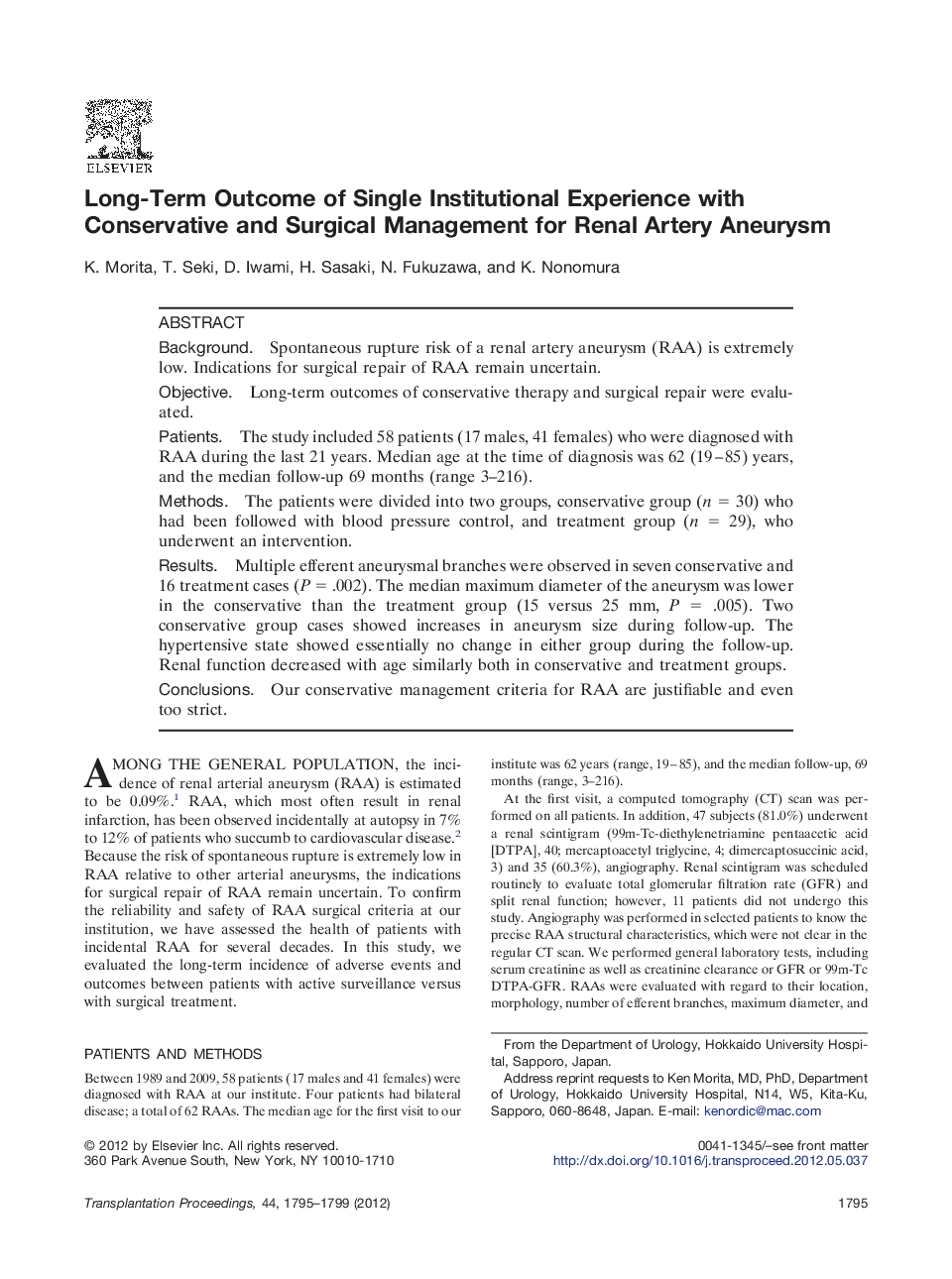| Article ID | Journal | Published Year | Pages | File Type |
|---|---|---|---|---|
| 4259969 | Transplantation Proceedings | 2012 | 5 Pages |
BackgroundSpontaneous rupture risk of a renal artery aneurysm (RAA) is extremely low. Indications for surgical repair of RAA remain uncertain.ObjectiveLong-term outcomes of conservative therapy and surgical repair were evaluated.PatientsThe study included 58 patients (17 males, 41 females) who were diagnosed with RAA during the last 21 years. Median age at the time of diagnosis was 62 (19–85) years, and the median follow-up 69 months (range 3–216).MethodsThe patients were divided into two groups, conservative group (n = 30) who had been followed with blood pressure control, and treatment group (n = 29), who underwent an intervention.ResultsMultiple efferent aneurysmal branches were observed in seven conservative and 16 treatment cases (P = .002). The median maximum diameter of the aneurysm was lower in the conservative than the treatment group (15 versus 25 mm, P = .005). Two conservative group cases showed increases in aneurysm size during follow-up. The hypertensive state showed essentially no change in either group during the follow-up. Renal function decreased with age similarly both in conservative and treatment groups.ConclusionsOur conservative management criteria for RAA are justifiable and even too strict.
